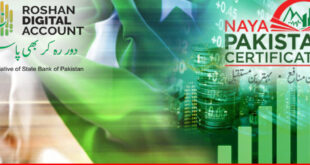No doubt, agriculture sector is a vital component of Pakistan’s economy as it offers the raw materials to down the line industries and assists inpoverty alleviation. This sector contributed 19.8 percent in GDP and it remains by far the largest employer absorbing 42.3 percent of Pakistan’s total labor force. The agriculture sector growth is contingent on favorable climate conditions.
There is a strong relationship between agriculture and climate/temperature, precipitation, floods and other aspects of climate that finally affect economic presentation including agriculture production, commodity rate and finally economic growth.
Unfortunately, greater value-addition in agriculture is handicapped by low level investment in modernizing farming and forging its backward and forward linkages. The net output of value-added agriculture has surged over the past 10-year, growing from less than $25billion in FY06 to more than $62 billion in FY2016. But, in terms of diversity and quality and not just the quantum of the GDP, the value-addition in our agriculture is inferior to China, India and many other countries. Going for greater, higher-quality, high-end value-addition in agriculture needs lots of investment — in agriculture research & development and in technologies etc — and is lacking.
One way of probing this issue could be by through capital formation in agriculture sector. At constant market price of 2005-06, private sector’s fixed capital formation in agriculture grew just 5 percent in the previous 3-year — from FY2013 to FY2016, though at current market rates the rise was obviously higher.
Another way of examining this issue could be by disbursement of bank loans for agricultural development and corporate farming. The previous 4-years’ average of both kinds of loans comes to just Rs30 billion a year. Clearly, banks need to do much more to spur value-addition. Food processing and packaging has grown over time and the names of some domestically processed and packaged food products can be cited as a big success. This shows that forward linkages (of agricultural value-addition) are being shaped. However, food processing and packaging has grown over time and the names of some domestically processed and packaged food products can be cited as a big success. And that shows that the forward linkages (of agricultural value-addition) are being shaped up.
Huge gap in food crops output
But there is a huge gap between the output of food crops and the scale on which their value-added products are being produced for local or export market. Unless that gap is bridged the economic returns of value-addition will remain limited. The country produces surplus rice and maize and is, more or less, self-sufficient in wheat and sugarcane. (The impact of occasional declines in the output of the last 2 crops can be minimized by removing some basic structural flaws). But Pakistan is yet to take full economic advantage of this blessing. The government keeps exporting maize and rice with very little or no value-addition at all. In local market, too, value-addition in key food crops rarely goes beyond a few steps — rice-based cuisine, breads made of wheat and maize flour and sugar and confectionaries etc.
It’s not that rice or wheat or maize is not being utilized in manufacturing of value added products. It’s the quality and diversity of the products made out of them and tapping of their full export potential that is under question. The list of the value-added food products produced domestically is long. The rise in income levels and change in lifestyles, hundreds of products are now available even in ready-to-cook and energy diets categories in addition to regular types. But two things are worth examining. First, only a small percentage of the domestic value-added food items are manufactured through leading, ISO-certified food firms, and the rest are produced by little-known firms and lack quality. This also reflects in exports.
Exports of value-added food products remain the exclusive domain of a limited number of firms and export volumes and export earnings remain limited. If the government excludes processed meat, fish and manufactured spices, the export earnings of all other value-added food products counting dairy and milk products, cereal-based food products and confectionary fetch less than $100 million a year.
Truly speaking, the food and beverage firms have been doing well. Rise in domestic demand and sales and marketing opportunities via internet have assisted them boost domestic sales. It is said that local sale volumes can be risen more and export potential can be further realized more effectively if the Government of Pakistan comes up with a plan for mapping the local food sector and then categorize the market players on different basis.
 PAGE Blog Business Weekly Magazine
PAGE Blog Business Weekly Magazine

